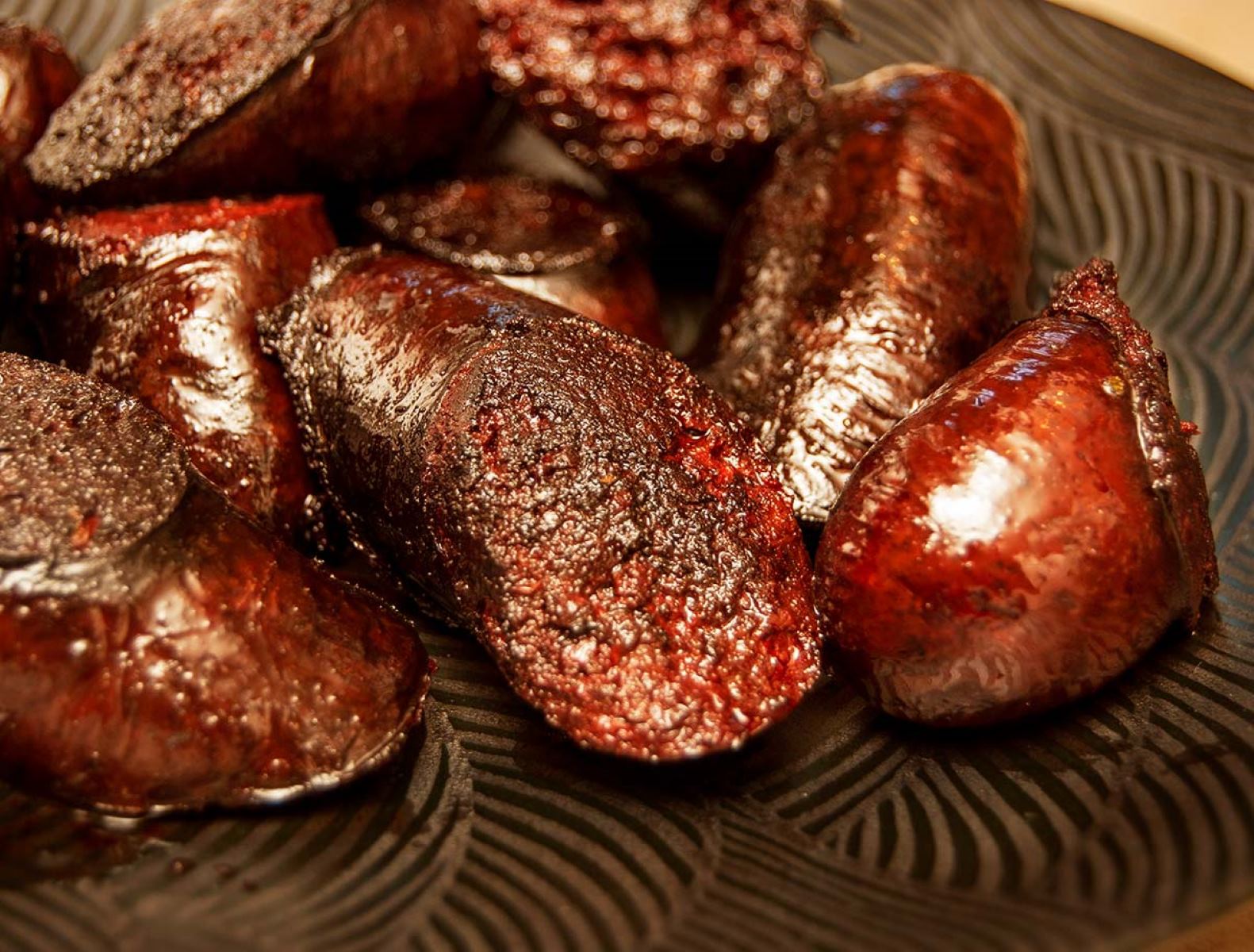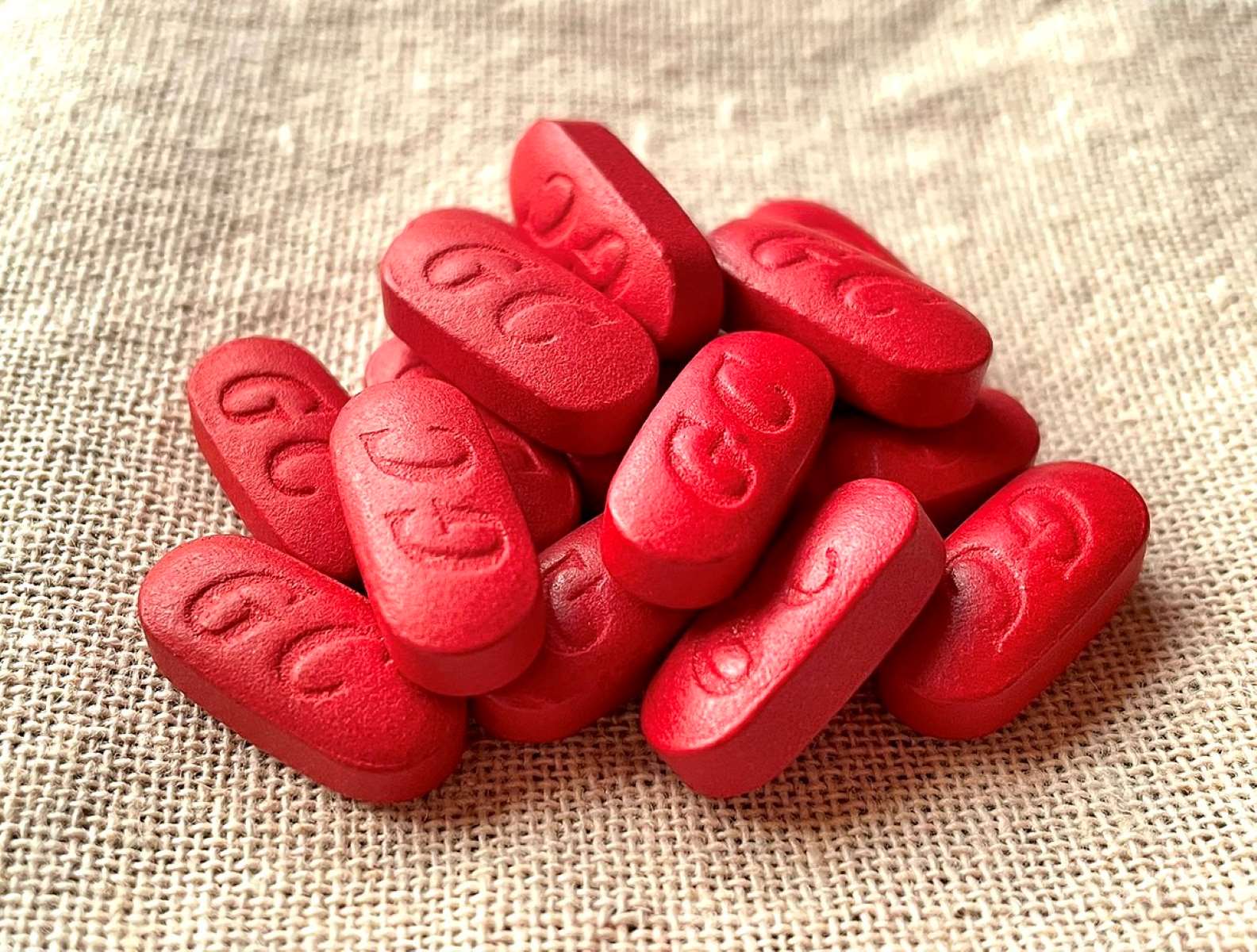

Science
The Surprising Flavor Of Blood Revealed!
Published: January 18, 2024
Discover the intriguing science behind the surprising flavor of blood. Uncover the fascinating secrets and complexities of this unique taste sensation.
(Many of the links in this article redirect to a specific reviewed product. Your purchase of these products through affiliate links helps to generate commission for Regretless.com, at no extra cost. Learn more)
Table of Contents
Introduction
Blood, the life-sustaining elixir that flows through our veins, has long been a subject of fascination and mystery. While it is commonly associated with vital functions such as oxygen transport and immune defense, the taste of blood has also piqued the curiosity of many. Whether encountered in the context of a minor injury or as a culinary curiosity, the flavor of blood holds a surprising allure that transcends its macabre connotations.
Throughout history, blood has been imbued with symbolic, cultural, and culinary significance across diverse societies. From ancient rituals to modern gastronomy, the taste and composition of blood have continued to captivate the human imagination. In this article, we will embark on a journey to unravel the enigmatic flavor of blood, delving into its composition, taste, and the intriguing role of iron. Additionally, we will explore how dietary factors can influence the flavor profile of this vital fluid, shedding light on its surprising and multifaceted nature. Join us as we uncover the unexpected complexities and nuances of the often overlooked, yet undeniably intriguing, flavor of blood.
The Composition of Blood
Blood, the crimson essence that sustains life, is a complex and dynamic fluid with a remarkable composition. Comprising approximately 55% plasma and 45% formed elements, blood is a sophisticated amalgamation of various components that collectively fulfill vital physiological functions.
Plasma
At the core of blood's composition lies plasma, a straw-colored fluid that serves as a transport medium for a diverse array of substances. Composed predominantly of water, plasma also contains an intricate blend of proteins, electrolytes, hormones, and waste products. These elements collectively facilitate the circulation of nutrients, hormones, and metabolic byproducts throughout the body, playing a pivotal role in maintaining homeostasis.
Formed Elements
Within the rich tapestry of blood, the formed elements, encompassing erythrocytes (red blood cells), leukocytes (white blood cells), and thrombocytes (platelets), are instrumental in orchestrating vital physiological processes. Erythrocytes, characterized by their biconcave shape and hemoglobin-rich composition, are responsible for oxygen transport and play a crucial role in tissue oxygenation. Meanwhile, leukocytes, the guardians of the immune system, function as the body's defense force, combating pathogens and foreign invaders to safeguard against infections. Additionally, thrombocytes, or platelets, contribute to hemostasis by orchestrating the intricate process of blood clotting, thereby preventing excessive bleeding and promoting wound healing.
Nutrient Transport
Beyond its cellular components, blood also acts as a conduit for the transport of essential nutrients, including glucose, amino acids, and lipids, which are vital for cellular metabolism and energy production. This nutrient-rich milieu ensures the sustained nourishment of tissues and organs, underscoring the indispensable role of blood in supporting the body's metabolic demands.
Waste Removal
Furthermore, blood serves as a conduit for the removal of metabolic waste products, such as carbon dioxide and urea, which are transported to the lungs and kidneys, respectively, for elimination from the body. This crucial function underscores the pivotal role of blood in maintaining the delicate balance of internal milieu and ensuring the efficient disposal of metabolic byproducts.
In essence, the composition of blood reflects a harmonious symphony of plasma, formed elements, and a myriad of essential substances, all working in concert to sustain life and maintain the delicate equilibrium of the human body. This intricate interplay of components underscores the multifaceted nature of blood, elevating it beyond its conventional portrayal as a mere bodily fluid, and highlighting its status as a marvel of biological engineering.
The Taste of Blood
The taste of blood, often encountered in the context of minor injuries or as a culinary curiosity, holds a surprising allure that transcends its macabre connotations. When it comes to the flavor profile of blood, it is characterized by a distinctive amalgamation of metallic, salty, and slightly sweet notes. The metallic undertone, attributed to the presence of iron, imparts a unique and unmistakable flavor that sets blood apart from other bodily fluids. This metallic taste, often described as "iron-like," is a defining characteristic that distinguishes the flavor of blood from conventional culinary experiences.
Upon contact with the taste buds, the presence of iron in blood triggers a sensory response that is distinctly different from the flavors encountered in everyday foods. The metallic taste, accompanied by a subtle saltiness, contributes to the complex and intriguing flavor profile of blood. Furthermore, the presence of certain proteins and lipids in blood can contribute to its slightly sweet undertones, adding another layer of complexity to its taste.
The sensory experience of tasting blood extends beyond its flavor profile, encompassing other perceptible attributes such as its texture and aroma. Fresh blood, when tasted, may exhibit a distinct metallic tang coupled with a subtle mineral-like aroma, creating a multisensory encounter that is both surprising and thought-provoking.
In the context of culinary exploration, the taste of blood has found its place in various traditional and contemporary dishes, adding a unique dimension to gastronomic experiences. Whether incorporated into savory delicacies or utilized in innovative culinary creations, the flavor of blood introduces a distinctive and enigmatic element that has intrigued adventurous palates throughout history.
The taste of blood, with its intriguing blend of metallic, salty, and subtly sweet nuances, offers a sensory journey that transcends the ordinary, inviting contemplation and curiosity. This enigmatic flavor, with its unmistakable character, continues to captivate the human imagination, underscoring the multifaceted nature of blood beyond its physiological functions.
In summary, the taste of blood, characterized by its metallic, salty, and subtly sweet notes, presents a sensory experience that is both distinctive and thought-provoking. This intriguing flavor profile, shaped by the presence of iron and other compounds, contributes to the enigmatic allure of blood, transcending its conventional associations and inviting exploration and contemplation.
The Role of Iron
Iron, a fundamental element in the composition of blood, plays a pivotal role in shaping the distinctive flavor profile and physiological functions of this vital fluid. As an essential component of hemoglobin, the iron within blood serves as the linchpin for oxygen transport, ensuring the efficient delivery of oxygen to tissues and organs throughout the body.
At the heart of blood's functionality lies the remarkable capacity of iron to form reversible bonds with oxygen, a process that underpins the crucial role of hemoglobin in oxygenation. When inhaled air reaches the lungs, the iron within hemoglobin facilitates the binding of oxygen molecules, enabling their transport through the bloodstream to peripheral tissues. This oxygen-rich blood then releases its cargo of oxygen to fuel cellular respiration, a process vital for sustaining metabolic activities and energy production.
Beyond its role in oxygen transport, iron contributes to the regulation of cellular metabolism and the synthesis of essential compounds within the body. Iron-containing enzymes, such as cytochromes and catalases, are integral to diverse metabolic pathways, including energy production and antioxidant defense mechanisms. Furthermore, iron plays a key role in the production of adenosine triphosphate (ATP), the primary energy currency of cells, thereby exerting a profound influence on cellular vitality and physiological functions.
In the context of taste, the presence of iron imparts a distinct metallic flavor to blood, a sensory attribute that distinguishes it from other bodily fluids. This metallic taste, often described as "iron-like," is a testament to the profound impact of iron on the sensory perception of blood, adding a unique dimension to its flavor profile.
The significance of iron extends beyond its physiological and sensory implications, encompassing broader implications for human health and well-being. Iron deficiency, characterized by inadequate iron levels in the body, can lead to an array of health complications, including anemia and impaired oxygen transport. As such, ensuring adequate iron intake through dietary sources is crucial for maintaining optimal physiological function and overall health.
In essence, the role of iron in blood encapsulates a convergence of physiological, sensory, and health-related dimensions, underscoring its multifaceted significance. From its pivotal role in oxygen transport and cellular metabolism to its influence on the flavor profile of blood, iron stands as a cornerstone of blood's composition and functionality, embodying a remarkable interplay of biological, sensory, and nutritional implications.
The Influence of Diet
The influence of diet on the flavor profile of blood is a fascinating dimension that underscores the intricate interplay between dietary choices and the sensory attributes of this vital fluid. While blood inherently possesses a distinctive flavor characterized by its metallic, salty, and subtly sweet notes, the dietary habits of individuals can impart nuanced variations to the taste and composition of blood.
Dietary components, such as spices, herbs, and specific food items, can subtly influence the flavor of blood when consumed as part of a regular diet. For instance, individuals who consume a diet rich in pungent spices and aromatic herbs may notice subtle nuances in the flavor of their blood, reflecting the aromatic compounds and flavor profiles inherent in the foods they consume. Moreover, the consumption of certain foods, such as red meat or iron-rich plant-based sources, can contribute to the overall iron content in the body, potentially impacting the sensory attributes of blood.
Furthermore, the influence of diet extends to the broader context of culinary practices, where the incorporation of blood in traditional and contemporary dishes introduces an additional layer of complexity to the interplay between diet and the flavor of blood. In various culinary traditions, blood is utilized as a key ingredient in dishes such as blood sausages, blood puddings, and specialty stews, where its unique flavor and nutrient content add depth and richness to the culinary creations. The integration of blood in these dishes not only showcases the influence of diet on the flavor of blood but also highlights the cultural and gastronomic significance attributed to this enigmatic fluid.
Additionally, the dietary preferences and habits of individuals can contribute to variations in the overall nutrient composition of blood, potentially influencing its flavor and sensory attributes. For instance, individuals adhering to specific dietary patterns, such as vegetarian or vegan diets, may exhibit differences in the nutrient profile of their blood, which in turn can manifest in subtle variations in its taste and composition.
In essence, the influence of diet on the flavor of blood reflects a dynamic interplay between dietary choices, culinary practices, and the sensory attributes of this vital fluid. As individuals navigate their culinary journeys and make dietary decisions, they partake in a subtle yet profound dialogue with the flavor of blood, shaping and enriching its multifaceted nature through the diverse tapestry of foods and flavors they encounter.
Conclusion
In conclusion, the flavor of blood, with its distinctive amalgamation of metallic, salty, and subtly sweet notes, transcends its conventional associations to emerge as a multifaceted sensory experience that captivates the human imagination. As we embarked on this exploration of the enigmatic flavor of blood, we delved into its composition, taste, and the pivotal role of iron, while also unraveling the intriguing influence of diet on its flavor profile.
The composition of blood, characterized by its complex interplay of plasma, formed elements, and a rich assortment of essential substances, underscores its status as a marvel of biological engineering. Beyond its physiological functions, blood embodies a symphony of vital components that collectively sustain life and maintain the delicate equilibrium of the human body.
When it comes to the taste of blood, the presence of iron imparts a unique and unmistakable flavor that sets it apart from conventional culinary experiences. The metallic, salty, and subtly sweet nuances of blood offer a sensory journey that transcends the ordinary, inviting contemplation and curiosity. This intriguing flavor profile, shaped by the presence of iron and other compounds, contributes to the enigmatic allure of blood, transcending its macabre connotations and inviting exploration.
The role of iron in blood, from its pivotal involvement in oxygen transport and cellular metabolism to its influence on the flavor profile, underscores its multifaceted significance. Iron stands as a cornerstone of blood's composition and functionality, embodying a remarkable interplay of biological, sensory, and nutritional implications.
Furthermore, the influence of diet on the flavor of blood reflects a dynamic interplay between dietary choices, culinary practices, and the sensory attributes of this vital fluid. As individuals navigate their culinary journeys and make dietary decisions, they partake in a subtle yet profound dialogue with the flavor of blood, shaping and enriching its multifaceted nature through the diverse tapestry of foods and flavors they encounter.
In essence, the flavor of blood, with its intriguing blend of metallic, salty, and subtly sweet nuances, offers a sensory experience that is both distinctive and thought-provoking. This enigmatic flavor profile, steeped in biological, sensory, and cultural dimensions, continues to captivate the human palate, transcending its conventional associations and inviting contemplation and exploration. Through our exploration, we have unveiled the surprising complexities and nuances of the often overlooked, yet undeniably intriguing, flavor of blood, inviting a deeper appreciation for this vital fluid and its enigmatic allure.













